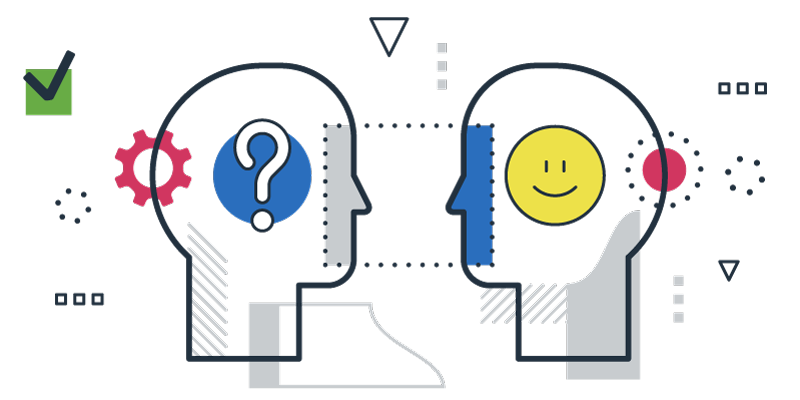Catalyst #1: Inclusive Design

When we gave a demo of an early version of WayAround to someone who is blind, within seconds of getting his hands on it, he remarked, “This is intuitive!” Then, he took it a step further and started explaining the system to us.
It was a defining moment—we knew we were heading in the right direction. From the beginning, we committed to developing a simple and intuitive indoor wayfinding system. Clean, streamlined design that strives for inclusiveness among diverse users doesn’t happen by chance. We root our design language, WayScience™, in inclusive design.
You’ve likely heard of universal design, but what, exactly, is inclusive design?
Think of it as the natural extension of universal design. Universal design is an architectural term from the 1960s that “describe[s] the concept of designing all products and the built environment to be aesthetic and usable to the greatest extent possible by everyone, regardless of their age, ability, or status in life.” (Source: NCSU College of Design) Picture a ramp that meanders pleasingly through landscaping: It’s both beautiful and useable by just about everyone, no instructions necessary.
Inclusive design takes universal design to the next level by starting with a solution to address a particular need. Whereas universal design aims to meet the needs of people with a wide variety of experience—a one-size-fits-all approach, if you will—inclusive design starts with a specific challenge and expands from there. Inclusive measures may be designed for accommodating differences in vision, mobility, height, or any other physical constraint or preference that influences someone’s experience of the built environment.
As a bonus, many businesses find that making a change to meet the needs of a particular group also benefits other people as well. The accessible trails project uses a layered approach to inclusive design, consisting of audio description, tactile maps, wide and flat walkways, and more to meet an array of needs. The creators note that even if you don’t require an assistive element today, there may be a time in the future because of illness, an accident, or aging, that these enhancements will become valuable.
Jenny Leland of the Starbucks Access Alliance explains, “Inclusive design, by definition, benefits many, is proactive, builds trust and supports a mindset shift from a focus on individual limitations to limitations on environment due to flawed design.” Rather than expecting patrons with low vision or blindness to bring their own assistive devices to read a menu, some restaurants (including Starbucks) provide versions of their menus in braille or large print. The menu has adapted, not the patron. It’s not universal design because it’s not accessible by everyone, but these specialized menus make a restaurant more inclusive for those with vision loss.
Let’s go back to our story about the man who tested WayAround. He found it to be intuitive because that’s how it was designed. Most products are created for the sighted, able-bodied person. Some products provide accessibility modifications. WayAround was created first and foremost for people who are blind or have low vision, and that’s a big part of why it’s so easy to use.
WayAround is fundamentally a tactile system that also provides an option for technology. Our tactile approach means anyone can use WayAround, anywhere it’s installed, anytime. Did you pick up on that? Because it’s installed, WayAround helps the environment to adapt to become more inclusive. You don’t have to fiddle with a smart device (unless you want to). You don’t have to remember to charge it. You don’t have to read braille (although it’s available). And you don’t even need a lot of training to understand it. Because WayAround doesn’t rely solely on auditory cues, it also works for those who are deafblind.
We’re continuously tweaking WayAround to be sure it’s as simple, flexible, and intuitive as possible. If you are blind or have vision loss, we’d love to hear from you about your challenges getting around indoors and to stay in touch with updates on WayAround. Leave us a comment below, and be sure to sign up for our email list.
Subscribe today for more WayAround tips and tricks!
Want to get tips, tricks, and news from WayAround delivered directly to your inbox? Subscribe today to get the latest! We will never spam you, and you can unsubscribe at any time.



